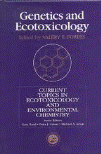Papers in the Biological Sciences
Date of this Version
2-1996
Abstract
The polychaete Capitella sp. I has been described as an enrichment opportunist and is one of very few species able to thrive in highly organic sediments heavily contaminated with polycyclic aromatic hydrocarbons (PAH) and other organic pollutants. We examined 3 plausible explanations for the success of Capitella sp. 1: (1) worms prevent uptake of PAH across body surfaces, (2) worms take up PAH but metabolize them effectively to excretable forms, and (3) worms utilize PAH as a carbon source. We examined the uptake and depuration of sediment-associated fluoranthene by Capitella sp. 1 and measured the metabolic loss of ingested 3-[14C] fluoranthene into particulate (POC), dissolved (DOC) and CO2 pools. Our results show that Capitella sp. I accumulates fluoranthene from sediment in a concentration- dependent manner, but that body burdens begin to decrease after 2 d and are undetectable by 7 d despite continued exposure to sediment fluoranthene concentrations of up to 360 μg (g dry wt sediment)-1 Worms pre-exposed to PAH-contaminated sediment for 1 wk excreted substantially more ingested fluoranthene as DOC than control worms (37 % vs 6% after 20 h), and retained significantly less fluoranthene in their tissues at the end of the experiment than control worms (33 % vs 56 %). Our results are consistent with the hypothesis that Capitella sp. I metabolize fluoranthene, but contrary to our Hypotheses 1 and 3, worms did take up fluoranthene and did not appear to use it as a carbon source.


Comments
Published in MARINE ECOLOGY PROGRESS SERIES 132 (February 29, 1996), pp. 63-70. Copyright 1996 Inter-Research. Used by permission.